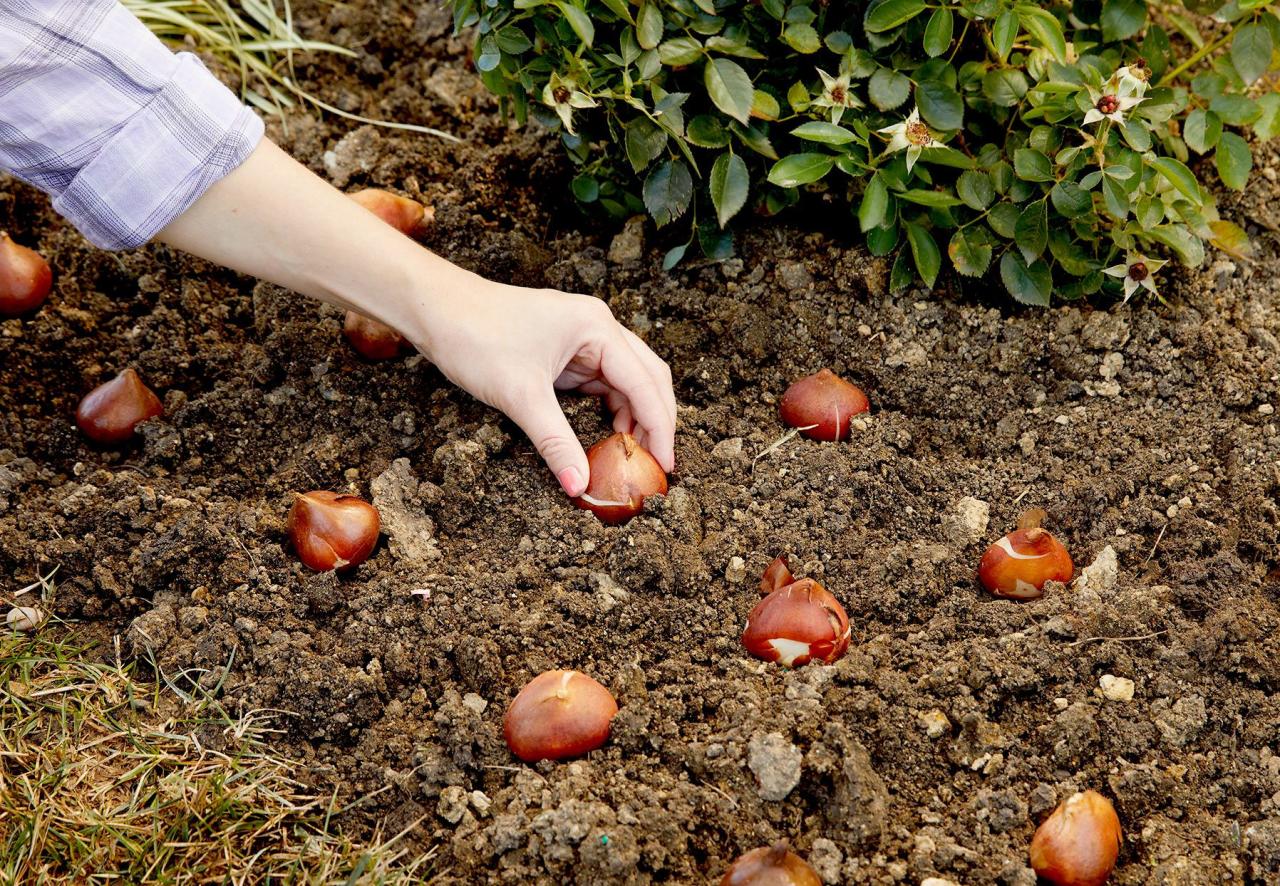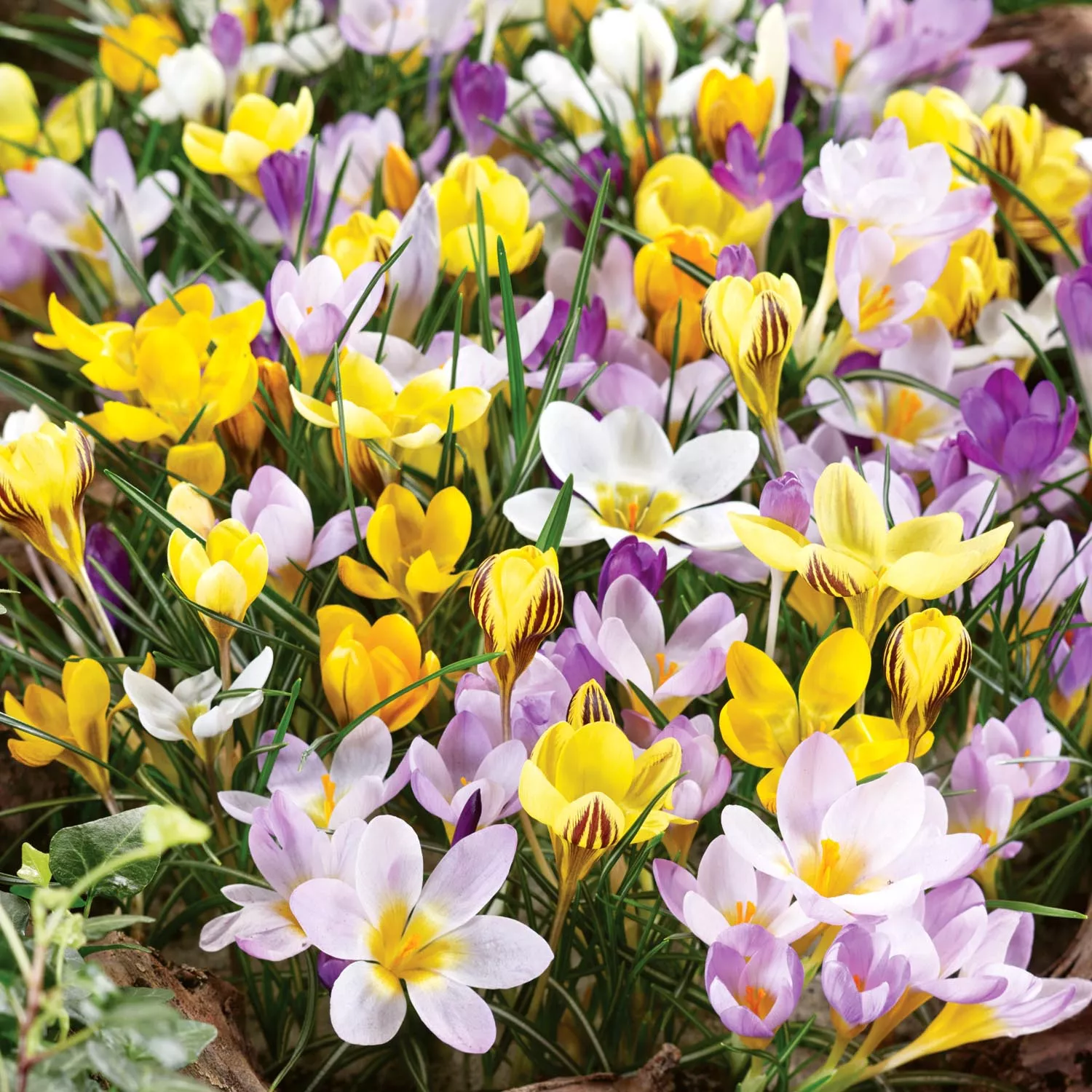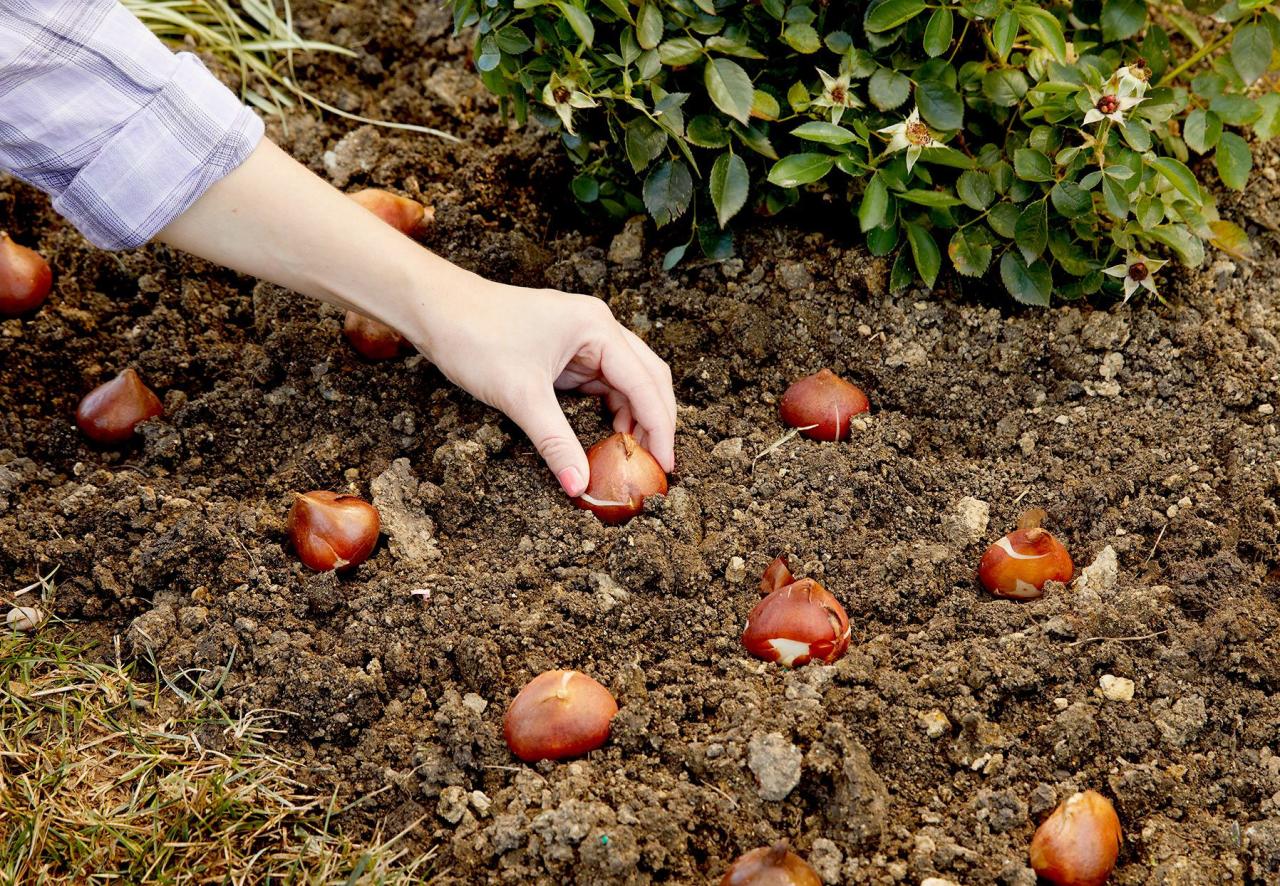How To Create A Show-Stopping Spring Display By Planting Bulbs In Fall sets the stage for a captivating journey into the world of bulb planting. Imagine a garden bursting with vibrant colors and fragrant blooms, a symphony of nature’s artistry that greets the arrival of spring.
This guide unlocks the secrets to achieving such a spectacular display, empowering you to transform your landscape into a breathtaking masterpiece. By planting bulbs in the fall, you’re not just planting flowers; you’re planting a promise of beauty and joy that will unfold with the first signs of spring.
This comprehensive guide explores the art and science of fall bulb planting, covering everything from choosing the right bulbs for your garden to ensuring their optimal growth and care. We’ll delve into the benefits of fall planting, demystify the process of selecting the perfect bulbs, and provide step-by-step instructions for successful planting and maintenance.
Whether you’re a seasoned gardener or a novice, this guide will equip you with the knowledge and confidence to create a show-stopping spring display that will be the envy of your neighborhood.
Understanding the Benefits of Fall Bulb Planting

Planting bulbs in the fall offers a multitude of advantages for creating a vibrant and stunning spring display in your garden. By planting bulbs during this time, you’re giving them the perfect head start to establish strong root systems and prepare for their spring blooms.
Advantages of Fall Bulb Planting
Fall planting provides several key advantages that contribute to a successful spring bloom:
- Well-Established Root Systems:Fall planting allows bulbs to establish a strong root system before winter arrives. This is crucial for their growth and development, ensuring they have a solid foundation for vigorous blooming in the spring.
- Natural Cooling Period:The cool temperatures of fall and winter trigger the bulbs’ natural dormancy period, allowing them to rest and prepare for their spring emergence. This natural cooling process is essential for their healthy growth and blooming.
- Early Spring Blooms:Bulbs planted in fall will typically bloom earlier in the spring than those planted in the spring. This allows you to enjoy their vibrant colors and fragrances sooner in the season.
- Wider Selection:A wider variety of bulbs are available for fall planting compared to spring planting. This allows you to create a more diverse and colorful spring display.
Bulb Types Suitable for Fall Planting
Here are some popular bulb types suitable for fall planting, along with their typical blooming seasons:
- Tulips:These classic spring bloomers come in a vast array of colors, shapes, and sizes. They typically bloom in late spring, from April to May.
- Daffodils:Known for their cheerful yellow blooms, daffodils are hardy and reliable bulbs that bloom in early spring, from March to April.
- Hyacinths:These fragrant bulbs produce clusters of bell-shaped flowers in various colors. They bloom in mid-spring, from April to May.
- Allium:This genus includes a wide variety of ornamental onions with spherical flower heads that attract pollinators. They bloom in late spring to early summer, from May to June.
- Crocuses:These small, early-blooming bulbs herald the arrival of spring with their vibrant colors. They typically bloom in February or March, depending on the climate.
Choosing the Right Bulbs for Your Garden

Selecting the right bulbs is crucial for creating a stunning spring display. Consider your garden’s conditions and your desired aesthetic when making your choices.
Bulb Types, Bloom Times, and Growing Conditions
Bulb Type |
Bloom Time |
Growing Conditions |
|---|---|---|
Tulips |
Early spring |
Full sun to partial shade, well-drained soil |
Daffodils |
Early to mid-spring |
Full sun to partial shade, well-drained soil |
Hyacinths |
Mid-spring |
Full sun to partial shade, well-drained soil |
Allium |
Mid-spring to early summer |
Full sun to partial shade, well-drained soil |
Crocuses |
Early spring |
Full sun to partial shade, well-drained soil |
Irises |
Late spring |
Full sun to partial shade, well-drained soil |
Lilies |
Summer |
Full sun to partial shade, well-drained soil |
Selecting Bulbs Based on Soil Type, Sun Exposure, and Color Palette
Before choosing bulbs, assess your garden’s soil type, sun exposure, and your desired color palette.
- Soil Type:Bulbs thrive in well-drained soil. If your soil is heavy clay, amend it with compost or sand to improve drainage.
- Sun Exposure:Most bulbs prefer full sun (6-8 hours of sunlight daily), but some tolerate partial shade (3-6 hours of sunlight daily).
- Color Palette:Choose bulbs in colors that complement your existing plants and garden design. Consider creating a monochromatic scheme, a contrasting scheme, or a rainbow of colors.
Importance of Choosing Bulbs with Appropriate Hardiness Zones
Choosing bulbs with appropriate hardiness zones is crucial for ensuring their survival and successful growth.
- Hardiness Zones:The USDA Plant Hardiness Zone Map divides the United States into 13 zones based on average minimum winter temperatures. This map helps gardeners choose plants that can withstand the climate in their area.
- Bulb Hardiness:Each bulb species has a specific hardiness rating. Choose bulbs that are rated for your hardiness zone to ensure they can withstand the cold winters in your region.
- Example:If you live in USDA Hardiness Zone 5, you should choose bulbs rated for Zones 4-7.
Planting Bulbs Correctly
Planting bulbs at the appropriate depth is crucial for their successful growth and blooming. The general rule of thumb is to plant bulbs at a depth that is two to three times the height of the bulb. However, the specific depth may vary depending on the type of bulb.
Planting Depth for Different Bulb Types
The depth at which you plant your bulbs will influence how well they grow and bloom.
Planning a stunning spring display? Planting bulbs in the fall is a surefire way to achieve that vibrant, eye-catching look. Just like cultivating a Bonsai tree requires patience and precision, planting bulbs demands careful timing and placement. By considering the sunlight and soil conditions for each variety, you can ensure a breathtaking display of blooms come spring.
- Small bulbs, such as crocus and grape hyacinth, should be planted 2-3 inches deep.
- Medium-sized bulbs, such as tulips and daffodils, should be planted 6-8 inches deep.
- Large bulbs, such as lilies and alliums, should be planted 8-10 inches deep.
Bulb Planting Spacing
The spacing between bulbs is equally important as the planting depth. Proper spacing allows bulbs to develop fully and prevents overcrowding.
Bulb Type |
Spacing |
|---|---|
Small bulbs (crocus, grape hyacinth) |
2-3 inches apart |
Medium-sized bulbs (tulips, daffodils) |
4-6 inches apart |
Large bulbs (lilies, alliums) |
6-8 inches apart |
Planting Bulbs with the Pointed End Facing Upwards
The pointed end of a bulb is where the shoot emerges. Planting the bulb with the pointed end facing upwards ensures that the shoot grows towards the surface, resulting in healthy plant growth and blooming. If planted upside down, the shoot may struggle to emerge, leading to weak or stunted growth.
Caring for Your Bulbs After Planting: How To Create A Show-Stopping Spring Display By Planting Bulbs In Fall
Once you’ve planted your bulbs, there are a few crucial steps to ensure they thrive and produce stunning blooms come spring. These steps focus on providing the right conditions for bulb development and protecting them from winter’s harshness.
Watering Bulbs After Planting
Watering bulbs after planting is crucial for their initial establishment and growth. A thorough watering immediately after planting helps settle the bulbs in their new home and promotes root development. This is particularly important during the fall months when the soil might be drying out.
However, avoid overwatering, as this can lead to bulb rot. A good rule of thumb is to water deeply but infrequently, allowing the soil to dry out slightly between waterings.
Mulching to Protect Bulbs, How To Create A Show-Stopping Spring Display By Planting Bulbs In Fall
Mulching is a valuable practice that offers several benefits for your bulbs. A layer of mulch, such as shredded bark, wood chips, or straw, provides insulation against frost and extreme temperatures. It helps regulate soil temperature, preventing sudden fluctuations that can harm bulbs.
Additionally, mulch suppresses weed growth, which can compete with bulbs for nutrients and moisture. A 2-4 inch layer of mulch is generally recommended, applied after the ground has frozen.
Fall and Winter Bulb Care Checklist
Here’s a checklist of essential tasks for bulb care throughout the fall and winter:
- Water deeply after planting: Ensure the bulbs have adequate moisture for initial establishment.
- Apply mulch: Protect bulbs from frost and extreme temperatures with a 2-4 inch layer of mulch.
- Monitor for pests and diseases: Inspect bulbs for any signs of damage or disease. Take appropriate action if necessary.
- Avoid disturbing bulbs: Minimize foot traffic over planted areas to prevent damage to bulbs.
- Patience: Trust the process! Bulbs need time to develop their roots and store energy for spring blooms.
Closure
As the days grow shorter and the air turns crisp, embrace the opportunity to plant a promise of spring. By following these simple yet effective steps, you can create a vibrant and enchanting garden that will burst into bloom when the world awakens from its winter slumber.
From the meticulous selection of bulbs to the gentle care they receive throughout the fall and winter, every step contributes to a spectacular display that will transform your landscape into a captivating oasis of color and fragrance. So, let the beauty of spring begin in the heart of fall, and let your garden become a testament to the power of nature’s artistry.
Helpful Answers
What are the best bulb varieties for beginners?
Tulips, daffodils, and hyacinths are known for their ease of planting and stunning blooms. These bulbs are relatively low-maintenance and thrive in a variety of garden conditions.
How deep should I plant my bulbs?
The general rule is to plant bulbs twice as deep as their height. However, always refer to the specific planting instructions for each bulb variety.
When should I start watering my bulbs after planting?
Water your bulbs thoroughly after planting and continue to water them regularly throughout the fall and winter, especially during dry periods.
Do I need to fertilize my bulbs?
While not strictly necessary, adding a balanced fertilizer to the planting hole can encourage strong root development and healthy blooms.

